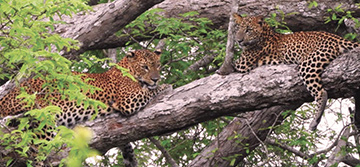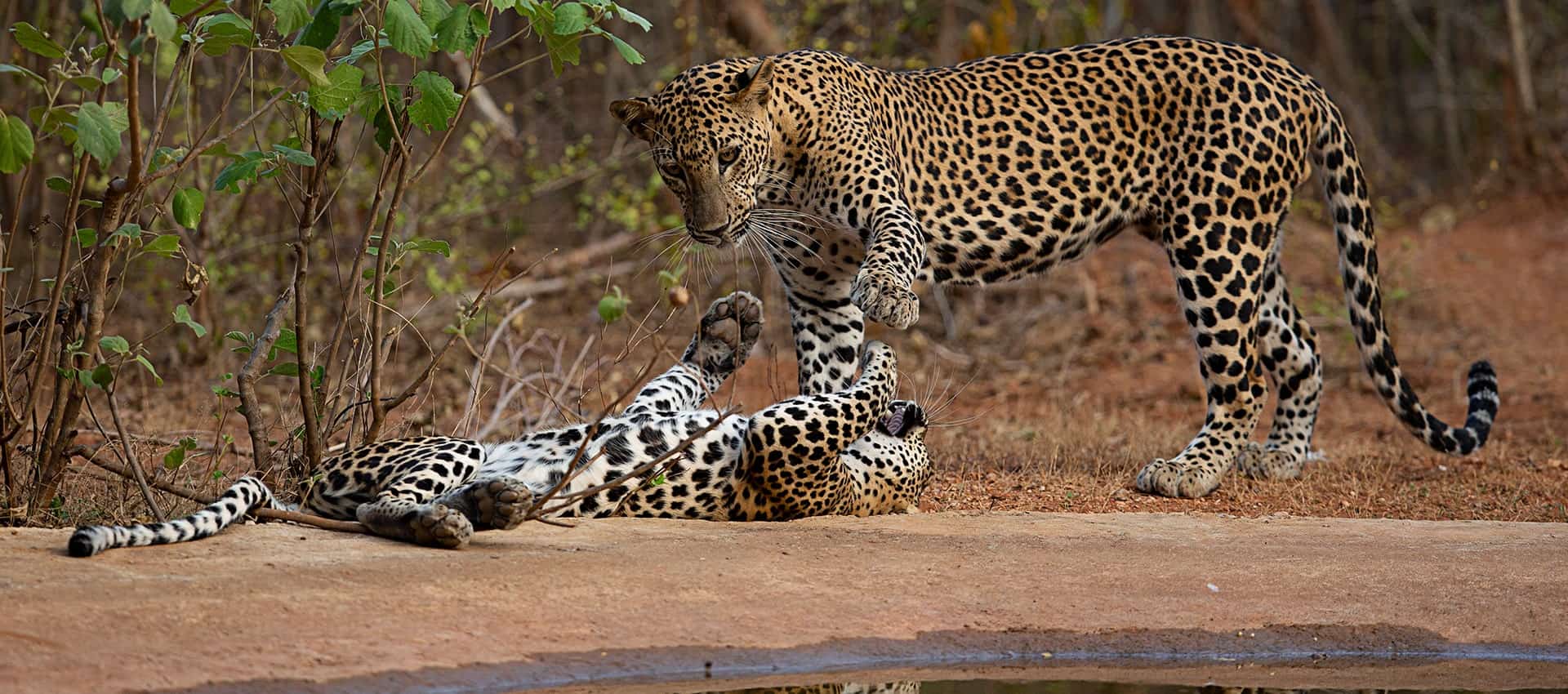Snapshot
Yala, situated in the south east corner of the island, is home to the greatest variety of Sri Lanka’s wildlife. Its varying habitats, consisting of scrub plains, jungles, rocky outcrops, fresh water lakes, rivers and beaches, provides home to many animals including sloth bear, elephants, buffalo, monkeys, deer, crocodiles and the endangered Sri Lankan leopard.
Weather
Located in one of the more arid regions of Sri Lanka, conditions at Yala National Park are mostly hot and dry, although rainfall is primarily expected from November to January (north-east monsoon) and during April (inter-monsoon). February is the driest month, although the long dry season runs from June to October. The mean annual temperature is 27°C, although in the dry season the temperature could go as high as 37C. January to March is best, but you can visit throughout the year. During very dry years, the park can be closed to encourage breeding.
Getting There
Situated in the south east of Sri Lanka, the Yala National Park can be reached from the hill country via Wellawaya to the south coast, or along the south coast from Galle. It will take up to six hours from Colombo via the southern highway then coast road.
Highlights
- The magnificent Yala leopard
- Yala’s open plains and abundant wildlife
- Herds of wild elephants
- The untamed beaches of the Yala coastline
- Camping inside the park
Yala National Park:
The Yala National Park is home to the greatest variety of Sri Lanka’s wildlife. Early-morning or dusk safaris with an expert guide are the ideal times to visit the park when the animals come out to the waterholes. Yala closes in the dry season, usually early in September. The Lunugamvehera National Park, in the same district, acts as a corridor for elephants migrating from the Yala National Park to the Uda Walawe area.
Kumana:
Kumana, also known as Yala East National Park can only be accessed via Arugam Bay on the South East Coast. The swamp lakes of Kumana are nesting sites for water birds. During the nesting season which begins towards June, large colonies of pelican, spoonbills, herons, painted storks, and egrets can be spotted here. Bundala is an important and beautiful wetland sanctuary combining 20 kms of beach, lagoons and scrub which hosts more than 150 bird species. These wetlands are home to winter migratory birds and large flocks of flamingoes.
Sri Lanka became the first country to set up a flora and fauna sanctuary in Mihintale, as long ago as the third century BC, so beginning a long tradition of conservation. Now, 12 per cent of the island is designated for wildlife protection. Although the strict natural reserves are out of bounds for visitors, there are National Parks and sanctuaries, tropical rainforests, and wetland marshes throughout the island where animals can be seen in their natural habitat. Yala National Park, with a total protected area of 1,267 sq kms, maintains a proud tradition. Yala's Block 1, on the western side of the park and Yala East (known as Kumana National Park) are the only two of five sections open to the public.
Yala
There are limited dining options outside of the hotels in Yala, so we recommend dining where you are staying. Jetwing Yala and Cinnamon Wild offer buffets with plenty of variety; Chena Huts and Wild Coast Tented Lodge serve beautifully presented fusion dishes in idyllic surroundings, and the tented campsites are renowned for their excellent traditional food, served under the stars
Popular Activities

Yala National Park
Yala National Park, Sri Lanka
Yala National Park, situated in the south-east corner of the island, is home to the greatest variety of Sri Lanka’s wildlife including the island’s big game – elephants, leopards and sloth bears.
Duration: 3 hours
Best time: December to August

Bundala National Park
Bundala national park, bundala, Sri Lanka
Bundala National Park, which neighbours Yala, is one of the best places for birdwatching in Sri Lanka, and is also home to sloth bears, elephants and deer.
Duration: 3 hours
Best time: September to March













